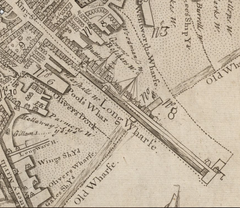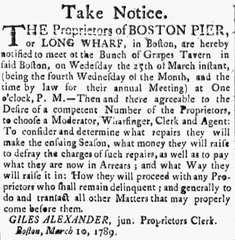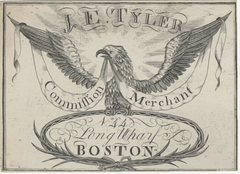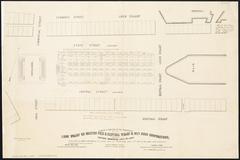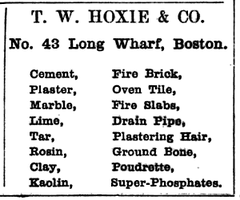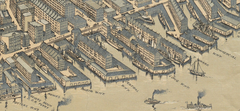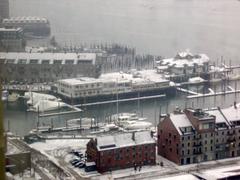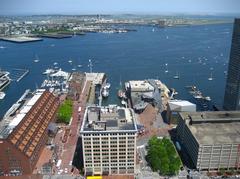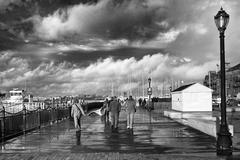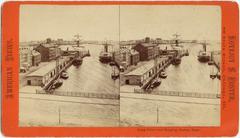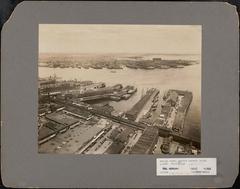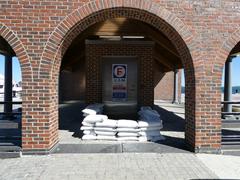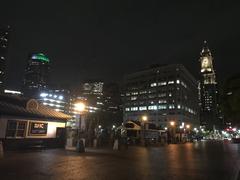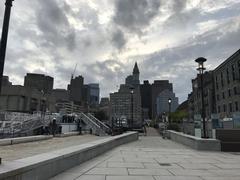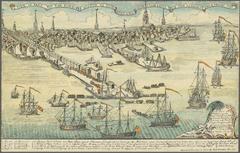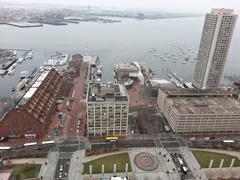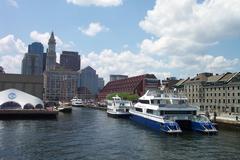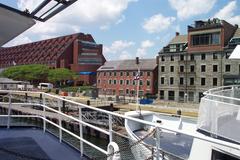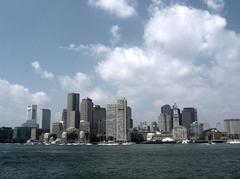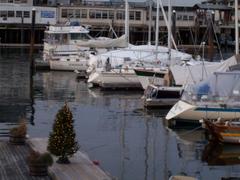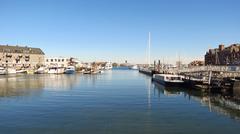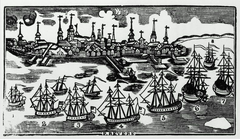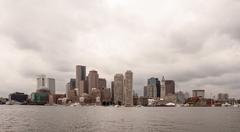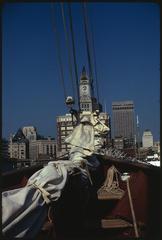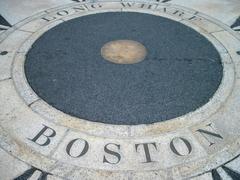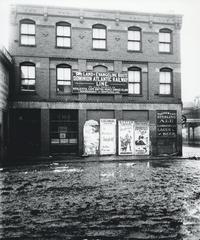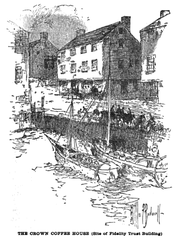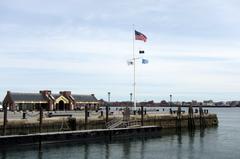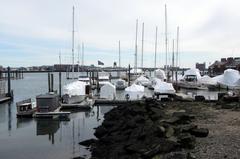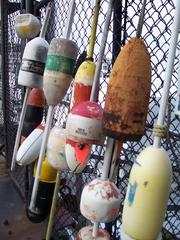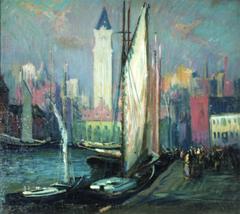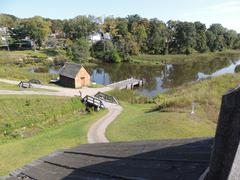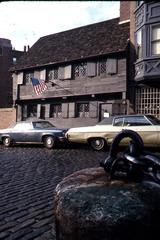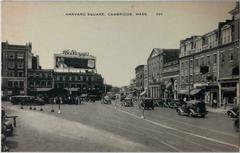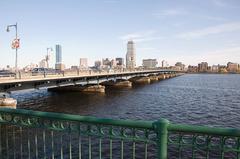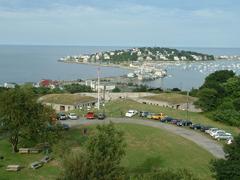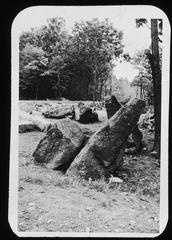
Long Wharf Visiting Guide: Hours, Tickets, History, and More
Date: 24/07/2024
Introduction
Long Wharf in Boston is a captivating destination that intertwines rich history with modern-day attractions. Situated at the base of State Street, the wharf was constructed between 1710 and 1721 and quickly became a focal point for maritime trade. The strategic location allowed for direct unloading into warehouses, establishing it as a critical hub in the Atlantic trading empire (NPS). Over the centuries, Long Wharf has witnessed pivotal moments in American history, from the arrival of British troops leading to the Boston Massacre to its role in the American Revolutionary War and the abolitionist movement. Today, Long Wharf stands as a National Historic Landmark, offering a blend of historical exploration and recreational activities, including harbor cruises and proximity to attractions like the New England Aquarium (Steve’s Travel Guide). This guide provides comprehensive information on visiting Long Wharf, including its historical significance, visitor tips, and nearby attractions, ensuring a memorable visit to this iconic site.
Table of Contents
- [Introduction](#introductionintroduction)
- [History of Long Wharf](#history-of-long-wharfhistory-of-long-wharf)
- [Early Construction and Significance](#early-construction-and-significanceearly-construction-and-significance)
- [Economic Hub of the Atlantic Trading Empire](#economic-hub-of-the-atlantic-trading-empireeconomic-hub-of-the-atlantic-trading-empire)
- [Military Significance](#military-significancemilitary-significance)
- [Post-Revolutionary War Era](#post-revolutionary-war-erapost-revolutionary-war-era)
- [Decline and Transformation](#decline-and-transformationdecline-and-transformation)
- [National Historic Landmark](#national-historic-landmarknational-historic-landmark)
- [Abolitionist History](#abolitionist-historyabolitionist-history)
- [Modern-Day Long Wharf](#modern-day-long-wharfmodern-day-long-wharf)
- [Visitor Information](#visitor-informationvisitor-information)
- [Ticket Prices and Visiting Hours](#ticket-prices-and-visiting-hoursticket-prices-and-visiting-hours)
- [Travel Tips](#travel-tipstravel-tips)
- [Nearby Attractions](#nearby-attractionsnearby-attractions)
- [Special Events and Guided Tours](#special-events-and-guided-toursspecial-events-and-guided-tours)
- [FAQ](#faqfaq)
- [Conclusion](#conclusionconclusion)
Exploring Long Wharf - History, Visiting Hours, and Tickets for Boston’s Iconic Site
History of Long Wharf
Early Construction and Significance
Long Wharf, located at the base of today’s State Street, was initially constructed between 1710 and 1721. Spearheaded by Capt. Oliver Noyes, following Henry Deering’s suggestion in 1707, it extended half a mile into Boston Harbor, making it the most ambitious endeavor on Boston’s waterfront at the time (NPS). Its strategic location facilitated the unloading of goods directly into warehouses, centralizing Boston’s commercial trade (NPS).
Economic Hub of the Atlantic Trading Empire
By the late 1700s, Long Wharf had become the nucleus of Boston’s maritime trade, handling both international and coastal trade. It was pre-eminent among Boston’s 80 wharves, capable of docking up to 50 vessels at a time (NPS). Supported by powerful New England merchant families, Long Wharf played a crucial role in the Atlantic trading empire. The wharf was also involved in the Mid-Atlantic slave trade, with some ships docking at Long Wharf holding enslaved Africans. A marker installed in 2020 recognizes this history (NPS).
Military Significance
In 1758, victors from the Battle of Louisbourg during the Seven Years’ War landed here to gun salutes and cheering citizens. However, the arrival of British troops via Long Wharf in 1770 to enforce the King’s rights received a different response, ultimately leading to the Boston Massacre (NPS). During the Siege of Boston, some British forces arrived at Bunker Hill from Long Wharf, and wounded soldiers from both sides were brought back across the harbor in June 1775. The British eventually evacuated Boston from Long Wharf in March 1776 (NPS).
Post-Revolutionary War Era
After the American Revolutionary War, trade resumed its dominant position on Long Wharf. New buildings like the Custom House Block and the Chart House were added to the wharf’s landscape (NPS). Boston achieved its peak of commercial prosperity in the 1840s-1850s, with merchant houses thriving on the China and East Indies trade (NPS).
Decline and Transformation
After the American Civil War, trade in Boston declined. The primary business shifted from international trade to coastal trade and fishing. By 1914, major fish dealers had moved to the newly completed Fish Pier in South Boston, and schooners and coastal steamers gradually disappeared (NPS). Despite these changes, Long Wharf has remained in constant flux, reflecting the prosperity and priorities of American shipping and trade (NPS).
National Historic Landmark
On November 13, 1966, Long Wharf received the designation of National Historic Landmark (NPS). Today, it is a popular tourist destination offering harbor cruises and proximity to the New England Aquarium (Steve’s Travel Guide).
Abolitionist History
Long Wharf also witnessed significant events in Boston’s abolitionist history. In 1851, local authorities marched captured freedom seeker Thomas Sims down Long Wharf to board the brig Acorn, which took him back to slavery in Savannah, Georgia. About a hundred abolitionists protested this rendition, a result of the 1850 Fugitive Slave Law. In 1854, Anthony Burns faced the same fate, leading to widespread protests (NPS).
Modern-Day Long Wharf
Today, Long Wharf remains a vibrant part of Boston’s waterfront, reflecting its rich history and ongoing significance. Visitors can explore the historic buildings, take harbor cruises, and enjoy the scenic views of Boston Harbor (NPS).
Visitor Information
Ticket Prices and Visiting Hours
Long Wharf is accessible to the public year-round. Specific attractions, such as harbor cruises and water shuttles, have varying ticket prices and operating hours. It is advisable to check the official websites or local information centers for the most up-to-date details.
Travel Tips
- Transportation: Long Wharf is easily accessible by public transportation, including the MBTA Blue Line (Aquarium station) and various bus routes.
- Weather: Boston’s weather can be unpredictable. Dress in layers and be prepared for sudden changes.
- Photography: The wharf offers numerous picturesque spots, especially at sunrise and sunset. Don’t forget your camera!
Nearby Attractions
- New England Aquarium: Located adjacent to Long Wharf, the aquarium is a must-visit for families and marine life enthusiasts.
- Faneuil Hall Marketplace: A short walk away, this historic site offers shopping, dining, and entertainment.
- Boston Harbor Islands: Accessible via water shuttles, these islands provide a natural escape from the city.
Special Events and Guided Tours
Long Wharf hosts various events throughout the year, including historical reenactments, maritime festivals, and guided tours. Check local listings for current events and schedules.
FAQ
-
What are the visiting hours for Long Wharf?
- Long Wharf is accessible to the public 24/7. However, specific attractions like harbor cruises have their own operating hours.
-
Are there any ticket prices for Long Wharf?
- Access to the wharf itself is free, but attractions like harbor cruises and water shuttles have ticket prices. Check the official websites for details.
-
What are some nearby attractions?
- The New England Aquarium, Faneuil Hall Marketplace, and Boston Harbor Islands are all nearby.
-
How can I get to Long Wharf?
- Long Wharf is accessible via the MBTA Blue Line (Aquarium station) and various bus routes.
Conclusion
Long Wharf stands as a testament to Boston’s maritime history and offers visitors a chance to explore its storied past. Whether you’re interested in historical tours or scenic harbor cruises, Long Wharf has something for everyone. Plan your visit today and immerse yourself in Boston’s rich heritage (NPS, Steve’s Travel Guide).
References
- NPS, Long Wharf, Boston (NPS)
- Steve’s Travel Guide, Long Wharf - The Heart of Colonial & Revolutionary Boston (Steve’s Travel Guide)
- Boston Harbor Islands, Ferry Schedule (Boston Harbor Islands)
- Boston Harborfest, Program PDF (Boston Harborfest)
- Lonely Planet, Top Things to Do in Boston (Lonely Planet)
- Nomadasaurus, Things to Do in Boston (Nomadasaurus)

